Whether you've just moved into a new house or are doing some renovations that require it, the ability to move your thermostat is a helpful one. And what seems like a complex process can actually be done by yourself at home with some know-how. So just how does one move a thermostat from one part of a wall to another, you might ask? We here at HVACSeer.com have researched the subject for you and written about it in this post.
Thermostats can have their interfaces removed and wires carefully disconnected. You can then remove the back panel from the wall and pick out your new location. Drill a hole into the new location and set the back panel. Pull the wires through the drilled holes and reconnect them to the thermostat's interface.
There's a lot more detail to this process that you'll likely want to know, so feel free to continue reading on down below as we go into it.
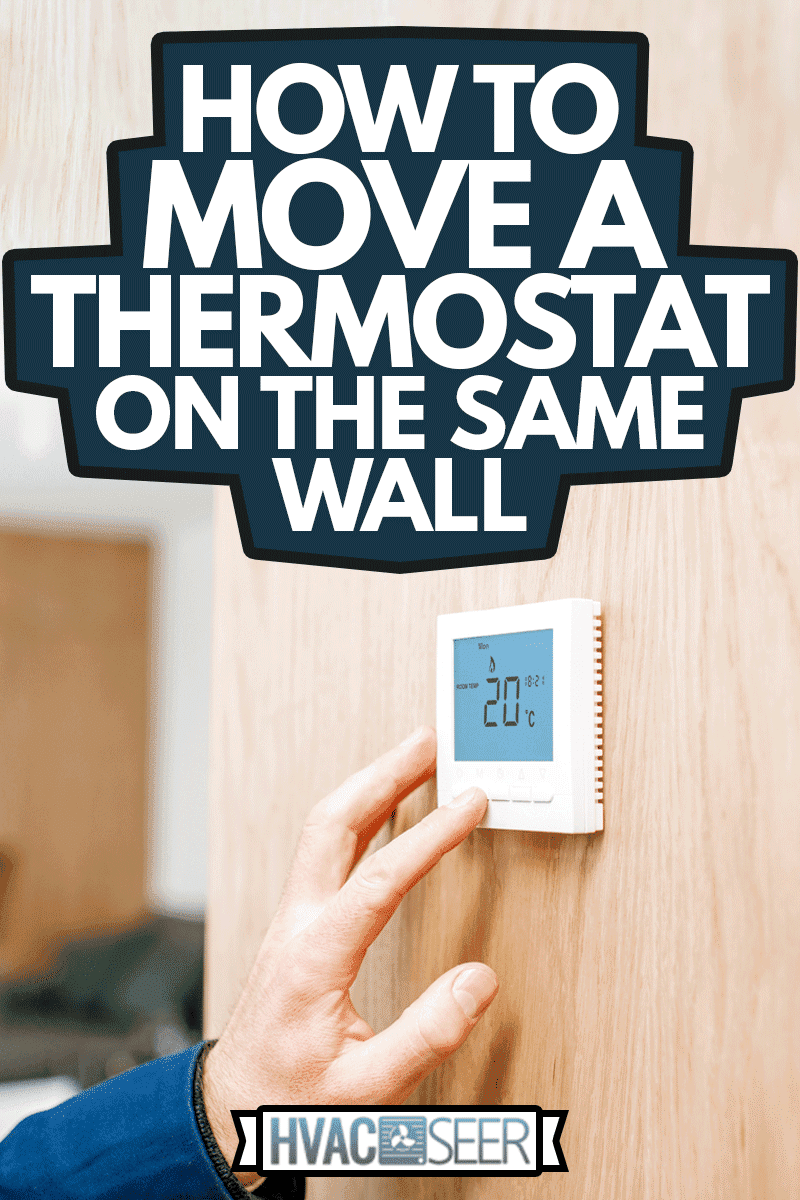
How do I Move my Thermostat Without Re-wiring It?
While the process of moving your thermostat is one you can do yourself, you will need some tools and know-how beforehand. Once you've got these steps and knowledge down, you'll be able to move your thermostat to whatever position best suits your needs.
First, make sure you have the proper tools to remove the wiring and panels from the thermostat. These include a set of small pliers, a screwdriver, a power drill, and a wire fishing tool. You should be able to purchase any one of these tools from your local hardware store.
Now that you're ready with these tools, you're ready to start removing your thermostat from your wall.
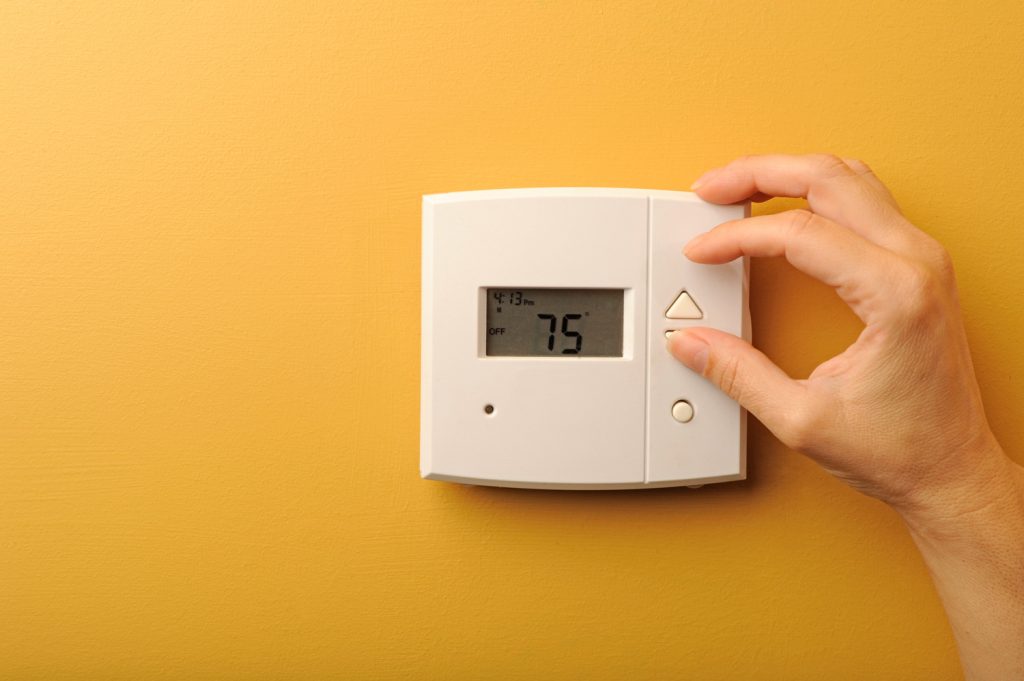
Turn Off the Power
It might seem obvious, but this is the very first step you should take before attempting to do anything else with your thermostat. Ensure all your breakers are off and all power is shut down before doing anything with any electrical wires. This will ensure your safety as you continue working in the area.
Begin Uninstalling the Thermostat
To uninstall the thermostat, begin by removing the interface from the back panel. This is where your screwdriver will come into play. Make a note or take a picture of how the wires inside are connected so that you can properly reconnect them at the new location.
Then begin to disconnect the wires using your pair of pliers. Lastly, use your screwdriver to remove the back panel from its housing on the wall.
Reinstall the Thermostat
Find your new location for the thermostat on the wall. Use your power drill to make new holes for the new back panel housing. Follow up by using your wire fishing tool to pull your wires in through the holes in the back panel. Refer to your notes about the correct position for your wiring and duplicate the correct configuration.
Spackle up the hole in the wall
There will be a leftover hole where your thermostat was previously, but this can be filled up with a little spackle in no time. Purchase a spackle that matches your wall and fill in the hole. Let it dry for about 24 hours, and then you can quickly repaint over the new spackle.
Once you have successfully finished all the above steps, you can safely turn the power back on and enjoy your newly located thermostat. This can help when it comes to better thermoregulation in your house, more suitably fitting new decor, and more—all with a freshly installed thermostat.
Read now on HVACSeer.com: 'Do I need a special thermostat for radiant heat?'
Does the Location of a Thermostat Matter?
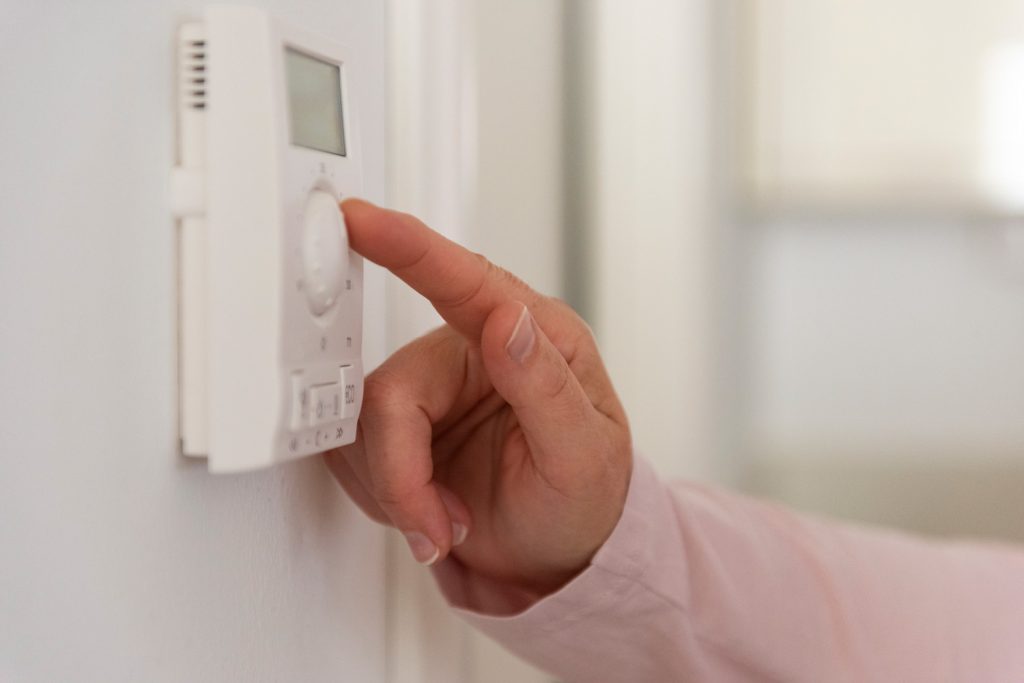
Some people will tell you the location of your thermostat doesn't matter, and that you can slap it anywhere and be fine. This is a proven myth, however, and the location of your thermostat does play a key role in many ways.
Thermostats that are in improper locations waste energy and money by causing your home to be overly cooled or heated unnecessarily. There are definitely some locations that aren't great for thermostats, as they may trigger false readings and improper use.
Where Should you Not Put a Thermostat?
Thermostats react to temperature, and therefore, outside interference can negatively impact their use drastically. Placing your thermostat directly across from a window is a good example of this. The direct sunlight on the thermostat from the window will cause the thermostat to read as incorrectly and too hot.
Similarly, placing your thermostat near your AC or heating vent can also cause false readings. This will push your HVAC system to work overtime and cost you money for little reason. It's ill-advised to place your thermostat anywhere where drafts are frequent.
Also, be aware when placing your thermostat in a kitchen or hallway. The heat from a frequently used oven will trigger a thermostat in the kitchen. Thermostats in hallways are subject to changing airflow due to limited space.
The best place to put your thermostat is on an interior wall away from all the previous problems we discussed, direct sunlight, air vents, windows, and doors, etc.). Placing it in the center of your home is ideal, where temperature fluctuations are less of an issue.
You should also keep in mind areas and rooms where you more often frequent. Placing it in a room where your family frequents more often will ensure their comfort when it comes time to adjust the temperature.
Read now on HVACSeer.com: 'Do AC thermostats have batteries?'
What Happens When a Thermostat goes Bad?
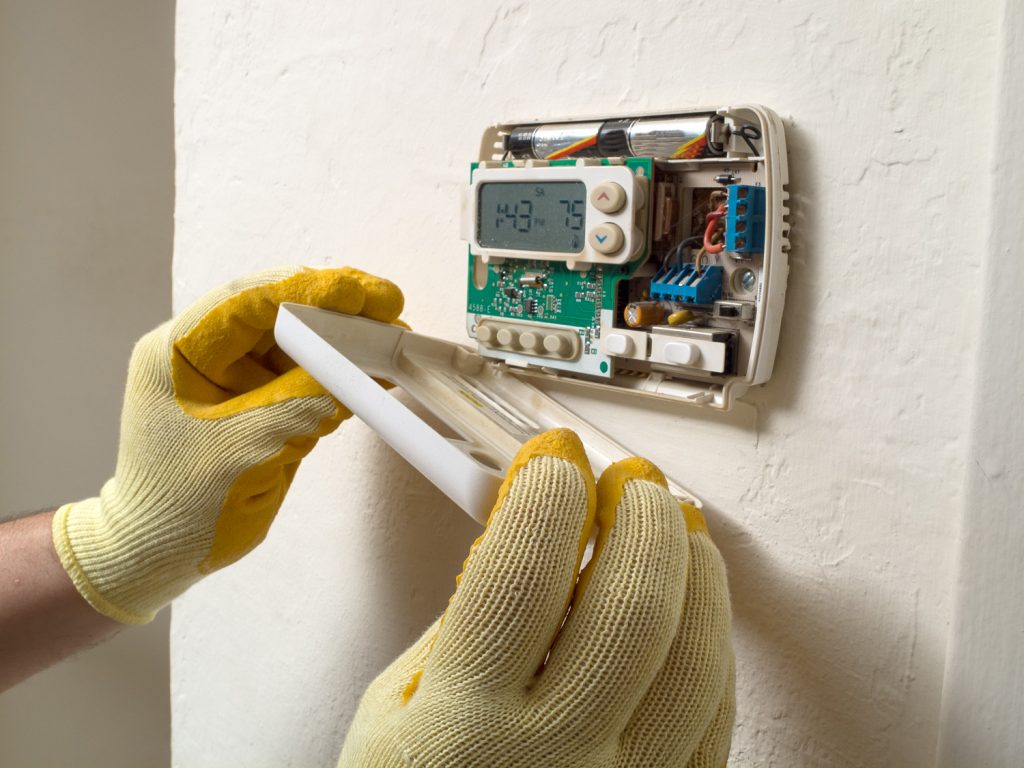
There are a couple of signs that can alert you to a bad thermostat in your home. If you notice any of these symptoms popping up, you might want to replace your thermostat, perhaps moving it if it was in a poor position in the house. There are also a few things you can do to troubleshoot before resorting to the total replacement of the thermostat.
Signs your Thermostat Has Gone Bad
There are a few signs your thermostat might have gone bad. Look into your thermostat as soon as you can if they exhibit any of these issues:
The Thermostat won't Turn On
The first one of these we're going to talk about is, of course, the power not turning on. If there is no change in the temperature when you attempt to adjust your thermostat, or if the display unit remains unresponsive, you might need a new thermostat or to replace the batteries.
Your Heater/AC won't Turn On
This could be a sign of faulty wiring, preventing electrical signals from being sent to the heating/cooling system.
Your Heater/AC Runs Constantly and won't Turn Off
The converse problem is also an issue and could be indicative of frayed wiring or a miscalibrated thermostat.
The Room Temperature and the Settings don't Match Up
A more subtle sign something is wrong is the temperature in the room doesn't match up. If you have a zoned house, then temperature differences between rooms are a normal occurrence. But if you don't have a zoning system, fluctuating temperatures in different parts of the home could point to a faulty thermostat.
Troubleshooting Problems with your Thermostat
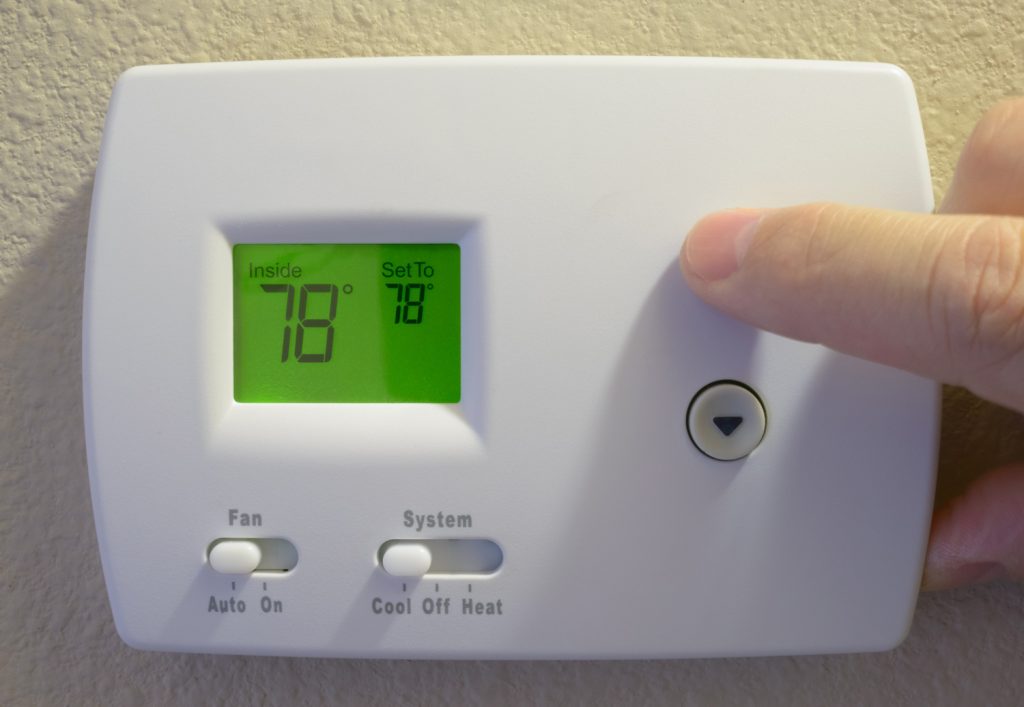
There are some methods you can troubleshoot your thermostat with if they exhibit any of the above symptoms. Try these out before total replacement.
Check the settings
An obvious one, but checking the settings on your thermostat can go a long way. Make sure it's on 'heat' in the winter and 'cool' in the summer for the right temperature changes. If your AC is constantly running, make sure it's set to AUTO and not just ON. This will ensure it only blows out air when the unit is running.
Turn the Thermostat Up or Down Five Degrees
For the summer, set the temperature five degrees lower than usual. For the winter, set it five degrees higher. You should hear a click. Wait a few minutes to see if your supply registers blow out the air or your return vents suck air in.
Replace the Batteries or Clean the Thermostat
If your thermostat uses batteries, replace them and see if that fixes any problems. If your thermostat is digital, try cleaning any parts of dust or particles that might be causing problems with transmitting signals.
Check and Test Wire Connections
If nothing else helps, remove your thermostat and check for any loose or faulty wiring. Make sure all the wires have a firm connection to their correct ports. If the wires are properly connected and your thermostat isn't working, it's likely time to contact the professionals.
How Much Does it Cost to Relocate a Thermostat?
Relocating your thermostat isn't a very expensive venture, considering you can do it yourself. If you skip the labor costs, the main points of concern will be your tools and the hole in the drywall you leave behind.
The hole in the wall can be patched yourself using a drywall kit. Since the hole shouldn't be too big, you can get away with a smaller patching kit. You'll also likely need to have purchased a wire puller, which can range from 15 to 40 dollars on average.
In Closing
There are many reasons why you might want to move your thermostat, even just across the wall, to a more suitable location in the house. Whether moving it away from drafts and the kitchen to save on heating or just making a more accessible location after moving some furniture, we hope this guide has helped you learn the ways and whys on moving your thermostat.
